Oxygen Therapy in COPD Management
Introduction
The chronic pulmonary obstructive disease is a global health issue projected to be the worldwide third most significant cause of death by 2020. It is characterized by chronic airflow restriction and acute bouts of symptoms that increase, or exacerbate, beyond the regular daily changes leading to changes in therapy. Acute Chronic Obstructive Pulmonary Disease (COPD) exacerbations are critical events linked to a quicker lung function decrease, worsening health, and higher mortality. The hypoxemic deficient gas exchange is a key characteristic of COPD, and various pathophysiological repercussions are underpinned. While the utilization of additional oxygen in stable diseases is suboptimal, one of the few evidentiary therapies is still needed to reduce mortality. Although hypoxemia exacerbates, there are more and more indications that unfair oxygen usage is equally harmful. The introduction of oxygen as a therapeutic mechanism years ago has been beneficial and greatly impacted oxygen therapy. According to Shen et al., (2020), it has been documented that around 800,000 patients in the UK receive long-term oxygen therapy. This context proves how influential this mechanism is to patients suffering from these conditions. For a patient to be under oxygen therapy, first, the caregiver must diagnose the cause of his/her condition before they are put under oxygen therapy. They have to study and understand the effect of pulmonary hemodynamics, sleep, and exercise capacity. The basis of the LTOT prescription for all patients is now acknowledged in a very select patient group based on very older data (> 25 years old) (Wouters et al., 2020). Further research is needed to evaluate the impacts of oxygen on survival and the function, quality of life, exercise physiology and sleep quality in patients with chronic obstructive pulmonary disease (COPD) with moderate hypoxemia. Furthermore, though it has been safe to treat people with a lung condition for a long time, certain worries exist regarding increased carbon dioxide retention and enhanced oxidation injuries. Furthermore, although persons with a lung problem have long been safe to treat, there are concerns about increased carbon retention and increased oxidative injury (Chuang et al., 2017). This was why this paper was designed to investigate literature reviews and critically analyze the literature on this issue. This paper is based on the choice of this subject.
Background and context
Studies have shown that the use of oxygen in our homes or the hospital for approximately 15 hours in a day prolongs life and makes people with server COPD live longer. However, it is important to note that Oxygen Therapy has a short-term effect and a long-term effect on people with COPD. Using Oxygen therapy in the lives of COPD patients may introduce confusion problems and memory problems in their lives (Fotokian et al., 2020). Nevertheless, Kidney impairment function may be caused by a lack of sufficient oxygen levels in a patient’s life. Many people with severe COPD experience restful hypoxemia when they are awake as their illness advances. This may or may not be associated with hypercapnia but is a dismal prognosis, regardless of the forceful volume of expiration in one second (FEV1). The scientific research of COPD has been pushed for many years by the need to obtain a clearer insight into the processes leading to these gas exchange abnormalities. This ultimately led to an efficient therapy to elevate arterial tension of oxygen over 8.0 kPa for at least 15 hours a day (Guo et al., 2020). Also, the key to proof-based oxygen prescription is the well-known randomized controlled studies that have shown the survival advantage of this medication. Since this finding was published in the 1980s, oxygen therapy costs have gradually climbed in the United Kingdom and worldwide. They are one of the greatest medical costs for COPD patients in particular. More than half of this money is used to supply oxygen for other indices than home care. The justification is less secure and probably less investigated for these additional indicators. A good contribution to our material on this prevalent therapeutic problem is publishing publications covering several facets of this therapy (Keogan et al., 2020). The physiological basis for the limitation of exercise in COPD has been challenged in recent years with observations that the end volume of the expiratory lung rises during exercise, closely linked to the degree of breathlessness. Effectively, more oxygen has increased by six minutes in the COPD compared to placebo (To et al., 2020). More extensive physiological tests show that a decrease in minute breathing can be produced instead of a distinct "dyspnogenic" impact. These advantages have been seen in individuals with generally normalxaemic rest (Mazzuco et al., 2020). Still, many COPD patients display a time of exercise oxygen unsaturation whose severity seems to be proportional to the transfer factor of carbon monoxide (TLCO). For the prescription of portable oxygen devices in North America, such desaturations are essential. Lung rehabilitation has been very efficient in enhancing exercise and minimizing respiratory illness in COPD. There was, however, concern that rehabilitation might increase exercise hypoxemia in encouraging active practices. By allowing a larger degree than would otherwise possibly be achievable, the treatment of hypoxemia during exercises might lead to more successful rehabilitation (Wang et al., 2020). Garrod and colleagues have previously discussed the importance of supplementary oxygen, but more comprehensive research has now been conducted, followed by 26 patients with mild restful hypoxemia and a 30 percent FEV1 (Broadbent et al., 2018). At the beginning of a pulmonary rehabilitation program, they studied the impact of oxygen on the air and compared this to the exercises and breathlessness at the finishing touch of the activity. They discovered that oxygen treatment lowered the intensity of breathing without affecting the distance before rehabilitation in this parallel-group design (Lee et al., 2019). There was no significant difference between individuals trained in oxygen respiration and those who did not come after rehabilitation. The rehabilitation was successful, and the authors were able to verify a new daily measure that might be more suited to identifying changes in COPD patients. As the researchers admit, this research is somewhat tiny, and the benefits of oxygen should be rather significant, at least as regards the better capacity of exercise before an analysis of this size could show them (Wen & Xu, 2019). It is a crucial note that the additional drawback of oxygen training is worthwhile if there is no significant advantage.

Aims of the report
The report aims at exploring the effects of giving oxygen to patients with Chronic Obstructive Pulmonary Disease (COPD) by looking at different literature that has been conducted on the same topic. The report will then summarize and critically appraise the evidence or the result that will be obtained from the search.
Search strategy
A search Strategy is a method used systematically to get data and sources of information such as existing published databases and libraries through research or evidence search in the medical sector (Bourne et al., 2017). Ideally, a planned and organized procedure is necessary that takes time to improve the quality, pertinence, and dependability of gathered data and information from prior studies. Search strategy utilized annotations, keywords, phrases, and express words to enable it to locate the best evidence to address the problem in a concise manner. Accordingly, current books, journals, institutional reports, government paperwork, and Internet databases are evidence sources in the area of medicine (Hasler et al., 2020). A correct, broad, and comprehensive search word is another key aspect in planning an efficient study. Search words describe domains, subfields, research problem and database results, and topics, as covered by an article, according to (Gardener et al., 2017). For relevant keyword, it should be noted that the majority of research engines (electronic and online) utilize keywords to determine whether or not the articles are in accord with the subjects and interests of the scientist. Ideally, keywords optimize research, allowing information to be optimized within the idea and limits of the intended aims (Ho et al., 2017). Therefore, the scope of the study includes the words: patients with Chronic Obstructive Pulmonary Disease, nursing practices, COPD health care (disorder, diseases, problems, difficulties, and problems), physical health/illnesses, physical health, the connection between low oxygen and effects of the kidney. The following words are presented during the search: physical health (disorder, diseases, challenges, and difficulties); it differs with the use of Boolean, truncation, and sentence research, incorporating physical obstacles for those who have patients with Chronic Obstructive Pulmonary Disease to cover a larger span of the study (Jung et al., 2020). With large sources, papers, and databases that store different literature, organized techniques and approaches like Boolean, phrase search, truncation, and inclusion and exclusion criteria might be wise. It is also sensible. In the research, using Boolean is used to optimize relationships between variables by using logical operators like AND, NOT, and OR between words and phrases that are interrelated, such effects of giving oxygen (Lee et al., 2018). On the other hand, truncation employs an asterisk to extend the root word search. Searching for engagement, for example, is intended to yield papers, involve, engage, and committed. Instead of comparing a random collection of keywords, the sentence search provides literature with exact phrases or phrases as sought. The search for "effects of giving oxygen to patients with Chronic Obstructive Pulmonary Disease" will, for example, unlock terms that contain phrases that have been searched, return publications, or reading materials. The following were the phrases used with keywords varied accordingly in the search engines:
Effects of giving oxygen to patients with Chronic Obstructive Pulmonary Disease Hemodynamic and gas exchange effects Effect of oxygen on recovery from maximal exercise
Take a deeper dive into Regulation of Complementary Therapy in the UK with our additional resources.
The databases have been selected for their medical and academic content, and hence publications considered out of the scope of this study have been eliminated. In addition, a range of databases has been utilized to expand the search and to obtain bigger results. Google Scholar, PubMed, ProQuest, MEDLINE, CINAHL, EMBASE, Cochrane, British Nursing Info (BNI), and PSYCHIINFO were all databases utilized as appropriate to locate infuriation research. The results were examined for duplicates to enhance the search approach.
Search Results
The search phrases in the abstract of the articles have been searched by selecting the abstract search option to guarantee that the relevant papers are searched in order to achieve a full search result. Boolean operators have been utilized as tools to widen, enhance and focus search strategy outcomes. Cuts were utilized to record changes in important keywords to ensure a larger choice of outcomes (Liu et al., 2019). The initial search was conducted with a broad set of results in 55400, "the effects of giving oxygen to patients with Chronic Obstructive Pulmonary Disease." The second search was to provide 17,500 results for Hemodynamic and gas exchange effects, with viewpoints, experiences, and impressions with different iterations. These have been combined to yield 72900 outcomes using the "and" Bloom's taxonomy. These results were applied between 2010 and 2021 by peer-approved English language limits and yielded 22,400 outcomes. In order to establish the relevant studies for the review and to highlight the limits, 95300 results were used for a third search. A qualitative "or" interview was carried out. These findings were coupled with the results of the second search for a final 388 study. Duplicates were removed; results that did not address the issues directly were also removed, leaving 25 studies that explored our research aim directly. Title and abstracts were tested for the 25 studies, and their relevance and eligibility were examined for this literature review. The screening was done by finding the papers with adequate evidence and links to support the research issue. Nine relevant studies have been located; however, 15 have been eliminated owing to a lack of concentration in the effects of giving oxygen to patients with Chronic Obstructive Pulmonary Disease.
Inclusion and exclusion criteria
On the other hand, inclusion and exclusion criteria establish a literature selection method which is considered to be required for the acquisition of relevant and detailed evidence. The methodology enables variables that are needed before the research starts to leave the literature out of the relevant literature, according to (Watson et al., 2020) in order for the criteria to support trustworthy outcomes in addition to limiting the research to be collected. Factors found valuable to the study in the prior literature are included (included), but not applicable to the study in question are not permitted (excluded). Depending on the research, criteria may include numerous characteristics such as age, symptoms, severity of the ailment, and medical history. Before starting a research, a structure that defines the quality of these criteria must be developed in order to evaluate if the anticipated outcomes will be produced before implementation.
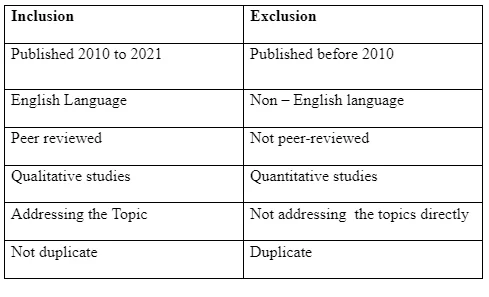
PRISMA Framework
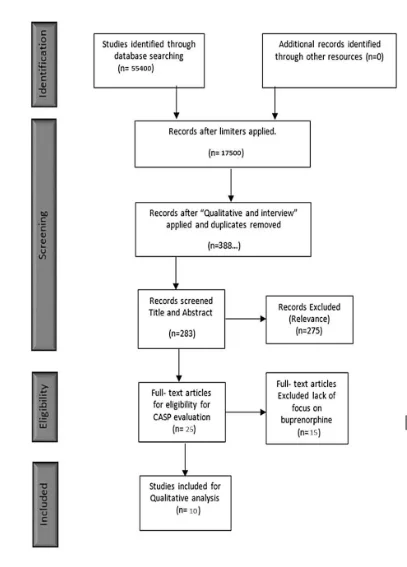
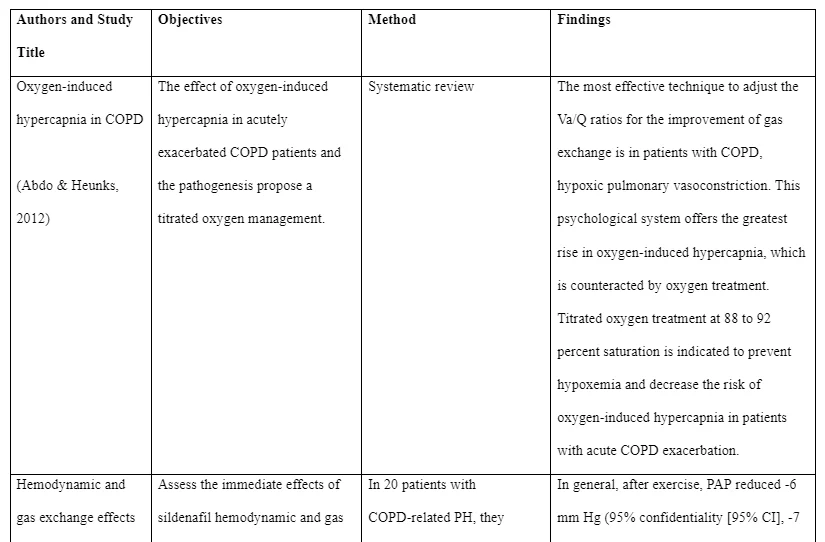
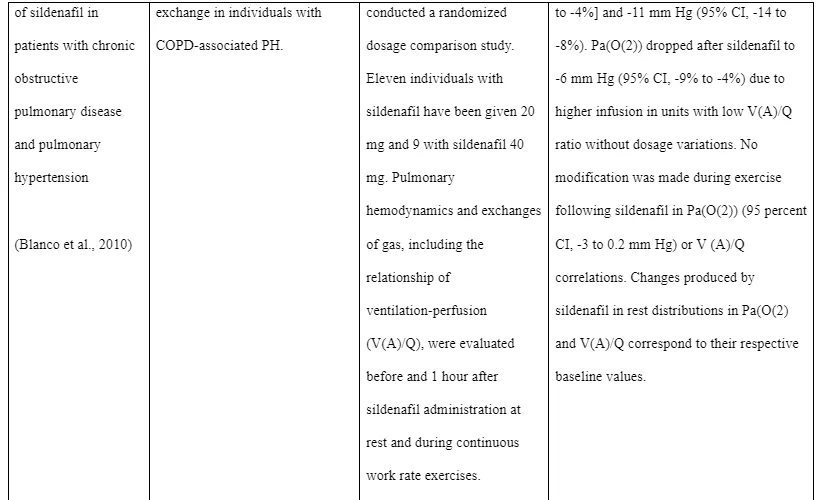

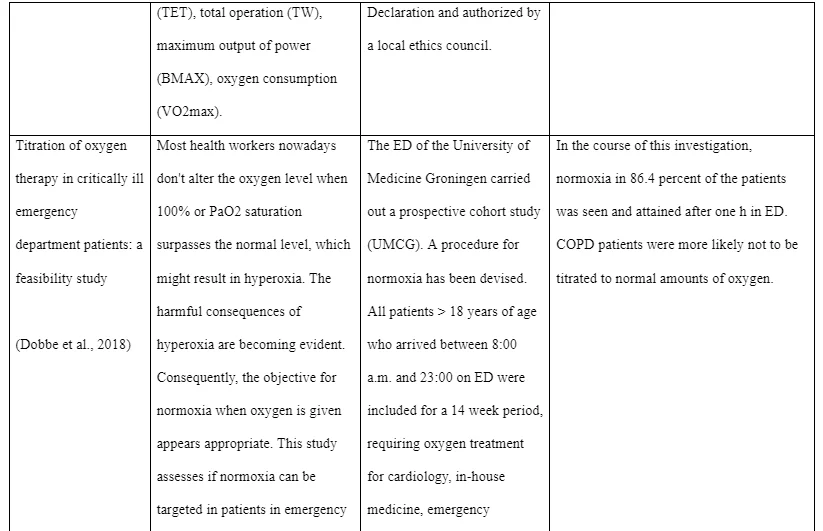
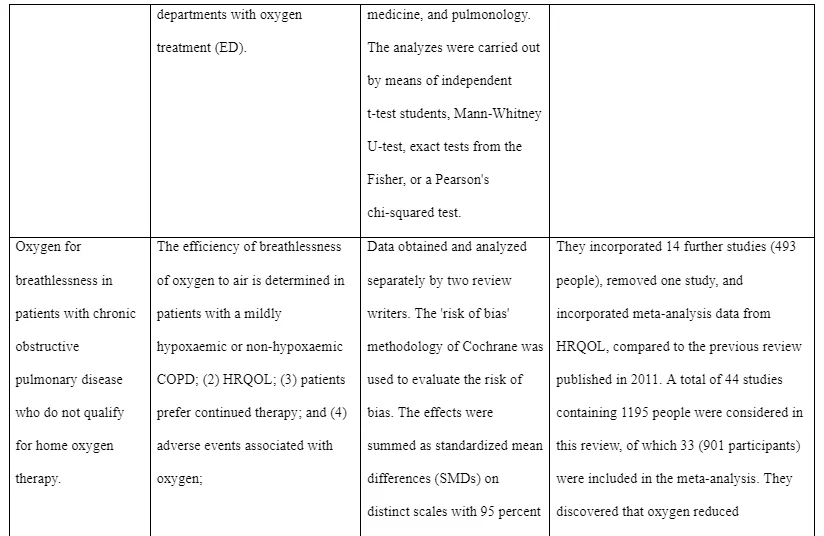
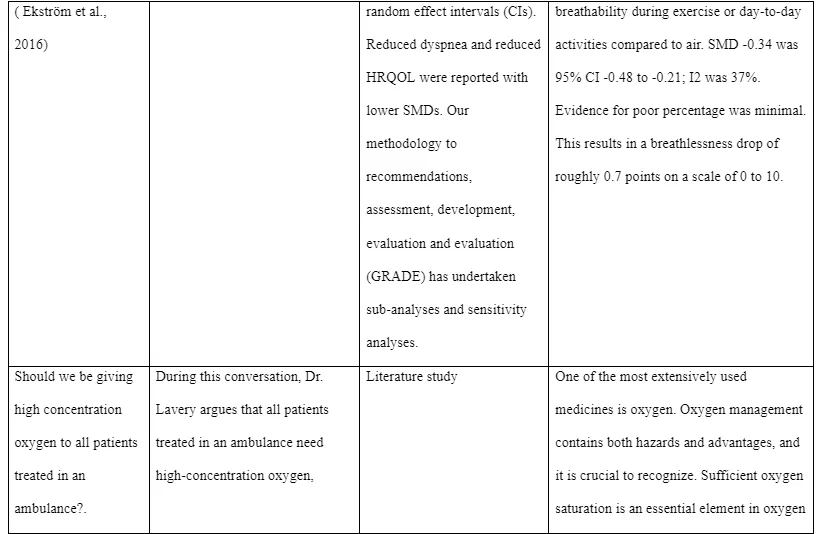
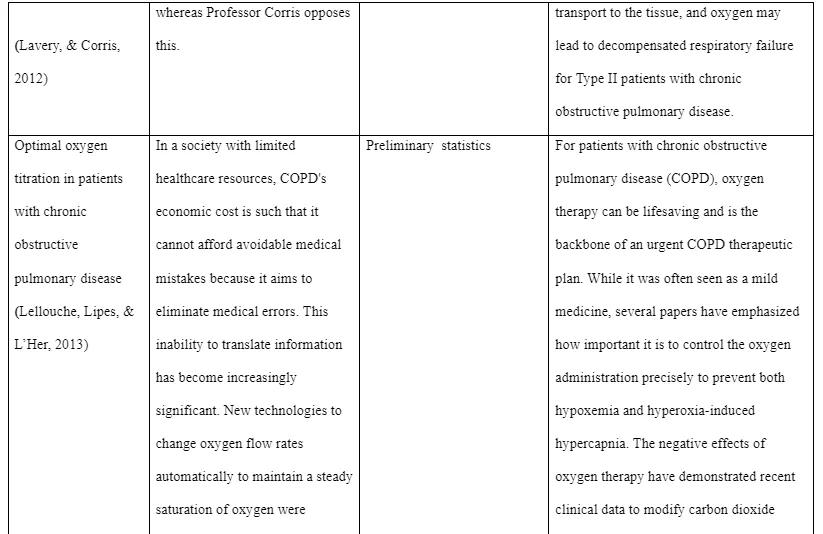
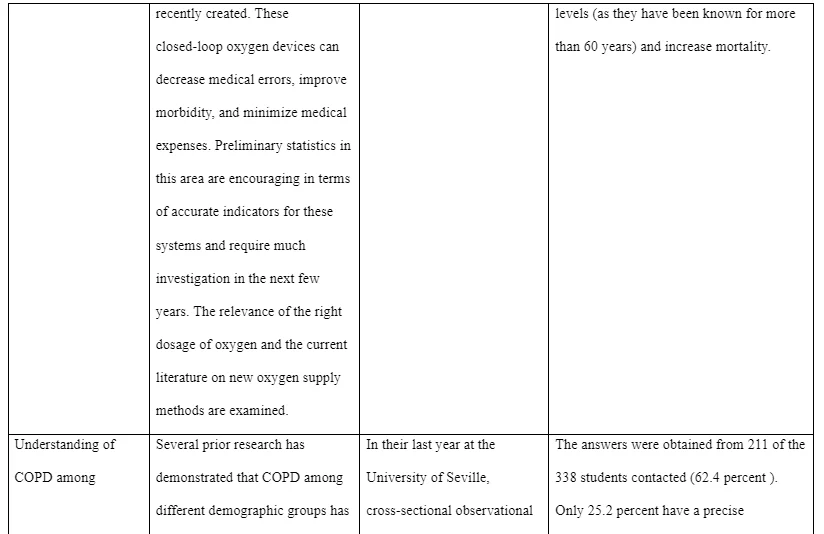
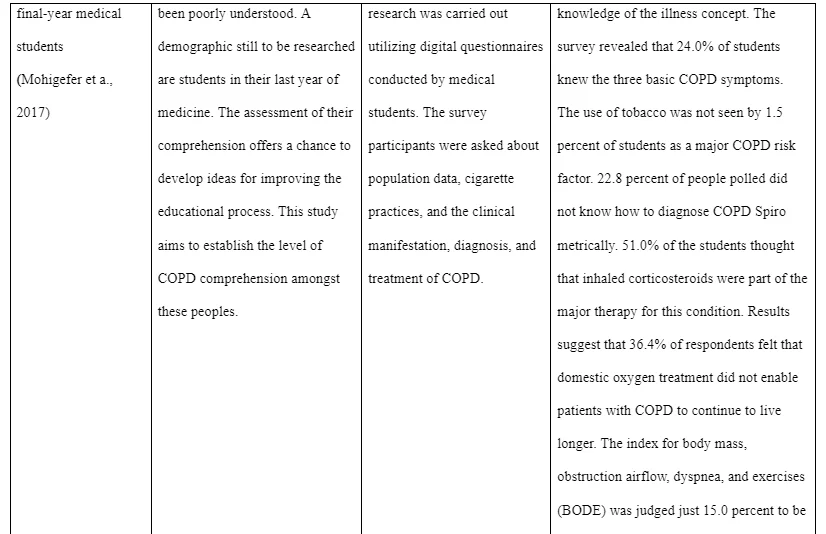
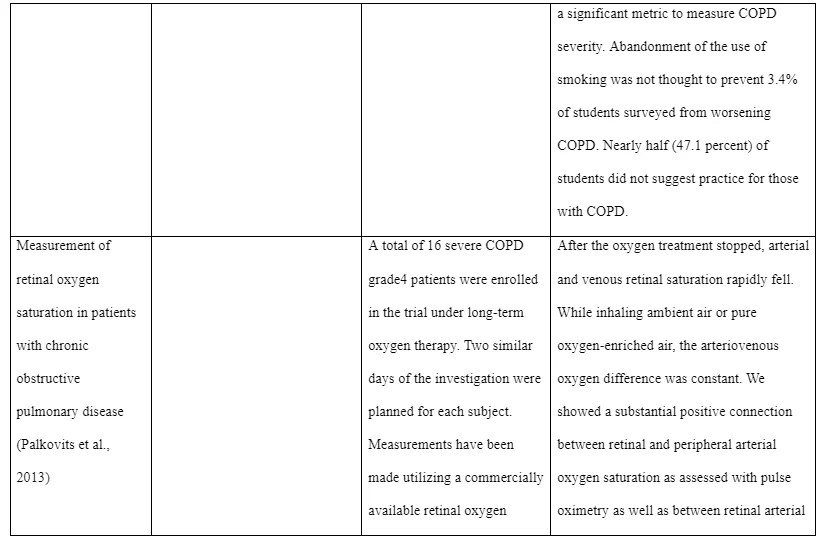

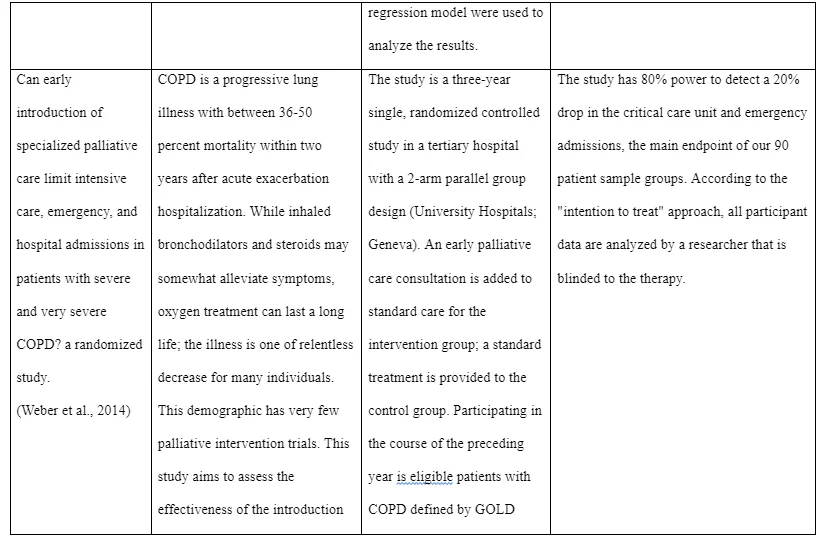
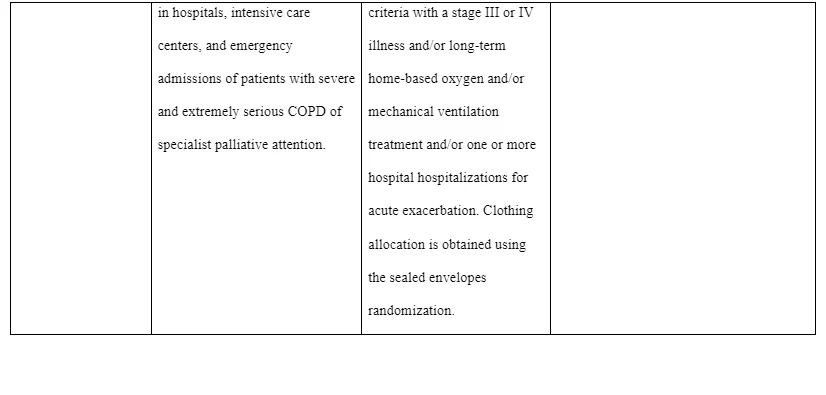
Critical appraisal of your evidence base
In the literary analysis of 10 publications, all had structural approaches to improve the validity and reliability of the data collection, all of which demonstrated internal reliability and further analysis, and some data triangulation, including reliability testing and reliability methodologies. Eligibility, legitimacy, and quality were checked in the documents. To assess the strength of the research articles, only studies that demonstrate a strong quality and validity were utilized to evaluate critical assessment expertise programs (Li et al., 2021). To assess the strength of the papers and flag erroneous or weak information, the CASP tool is broken up into question parts. The study reviews thoroughly analyzed the participants' perspectives, such that a theme analysis was assessed and completed. The evidence that denotes trustworthiness, relevance, and value may be carefully and systematically evaluated using the tool. It also evaluates issues that informed the research base, the relation between the topics and the goal, methodology, and any prejudice the researcher had. THUS, the CASP tool was chosen as a qualitative instrument to measure legitimately, instead of the alternative CASP tool as one to analyze data and statistics in a research project, which was a quantitative instrument (Bettany-Saltikov and Mcsherry, 2016). For validity, reliability, and trustworthiness, each document was analyzed using the qualitative CASP method.
Discussion
Concluded the theme analysis using a ten-step process; the organized approach was utilized to analyze and synthesize the ten research by getting to know the data, creating codes, looking for starting subjects, examining themes, determining them, and making the results. The synthesis of emotions and feelings linked to experiences and opinions allows for a clearer definition of issues and links in complicated data.
Theme 1 - Treatment satisfaction
Studies indicated the first topic of treatment satisfaction was a witness (Abdo & Heunks, 2012). This psychological system offers the greatest rise in oxygen-induced hypercapnia, which is counteracted by oxygen treatment. Titrated oxygen treatment at 88 to 92 percent saturation is indicated to prevent hypoxemia and decrease the risk of oxygen-induced hypercapnia in patients with acute COPD exacerbation.
Theme 2- Hemodynamic and gas exchange effects
According to Blanco et al. (2010, positive results were achieved in Hemodynamic treatment. This was noted in the results of the patients who took part in the study. In general, after exercise, PAP reduced -6 mm Hg (95% confidentiality [95% CI], -7 to -4%] and -11 mm Hg (95% CI, -14 to -8%).
Theme 3 positive results in training performance
Crisafulli et al. (2011) found out that all individuals finished the program, and during legendary occlusion, none complained of insupportable pain or discomfort. In all tests performed, all participants satisfied the chosen VO2max performance requirements.
Theme 4 Titration of oxygen therapy
Most health workers nowadays don't alter the oxygen level when 100% or PaO2 saturation surpasses the normal level, resulting in hyperoxia. The harmful consequences of hyperoxia are becoming evident (Dobbe et al., 2018).
Theme 5 Oxygen effectiveness in patients with breathlessness
Ekström et al. (2016) found out that patients prefer Oxygen therapy to any other form of medication. As it was found to be effective to patients with breathlessness. They discovered that oxygen reduced breathability during exercise or day-to-day activities compared to air.
Theme 6 patients should be given the recommended amount of oxygen
Oxygen management contains both hazards and advantages, and it is crucial to recognize. Sufficient oxygen saturation is an essential element in oxygen transport to the tissue, and oxygen may lead to decompensated respiratory failure for Type II patients with chronic obstructive pulmonary disease 9 Lavery & Corris, 2012).
Theme 7 oxygen titration
The negative effects of oxygen therapy have demonstrated recent clinical data to modify carbon dioxide levels (as they have been known for more than 60 years) and increase mortality (Lellouche, Lipes, & L’Her, 2013).
Theme 8 Understanding of COPD
51.0% of the students thought that inhaled corticosteroids were part of the major therapy for this condition. Results suggest that 36.4% of respondents felt that domestic oxygen treatment did not enable patients with COPD to continue to live longer. The index for body mass, obstruction airflow, dyspnea, and exercises (BODE) was judged just 15.0 percent to be a significant metric to measure COPD severity (Mohigefer et a., 2017).

Theme 9 Measurement of retinal oxygen saturation in patients
Palkovits et al. (2013) showed a substantial positive connection between retinal and peripheral arterial oxygen saturation as assessed with pulse oximetry and between retinal arterial and peripheral arterial oxygen measured in blood samples, both with the correlation between Pearson as well as with the multivariate model.
Theme 10 early introduction of specialized palliative care can limit intensive care.
COPD is a progressive lung illness with between 36-50 percent mortality within two years after acute exacerbation hospitalization. While inhaled bronchodilators and steroids may somewhat alleviate symptoms, oxygen treatment can last a long life; the illness is one of relentless decrease for many individuals. This demographic has very few palliative intervention trials (Weber et al., 2014).
Conclusion
The results from the papers managed to show the effects of giving oxygen to patients with Chronic Obstructive Pulmonary Disease (COPD). The research covered ten articles to find out the results of the effect of Oxygen on COPD. Almost all the studies indicated oxygen on COPD patients; this proved that oxygen therapy is the most relevant treatment for patients with COPD conditions.
Reference
Blanco, I., Gimeno, E., Munoz, P. A., Pizarro, S., Gistau, C., Rodriguez-Roisin, R., ... & Barberà, J. A. (2010). Hemodynamic and gas exchange effects of sildenafil in patients with chronic obstructive pulmonary disease and pulmonary hypertension. American journal of respiratory and critical care medicine, 181(3), 270-278.
Bourne, S., DeVos, R., North, M., Chauhan, A., Green, B., Brown, T., ... & Wilkinson, T. (2017). Online versus face-to-face pulmonary rehabilitation for patients with chronic obstructive pulmonary disease: randomised controlled trial. BMJ open, 7(7), e014580.
Broadbent, E., Garrett, J., Jepsen, N., Ogilvie, V. L., Ahn, H. S., Robinson, H., ... & MacDonald, B. (2018). Using robots at home to support patients with chronic obstructive pulmonary disease: pilot randomized controlled trial. Journal of medical Internet research, 20(2), e45.
Crisafulli, A., Tangianu, F., Tocco, F., Concu, A., Mameli, O., Mulliri, G., & Caria, M. A. (2011). Ischemic preconditioning of the muscle improves maximal exercise performance but not maximal oxygen uptake in humans. Journal of applied physiology, 111(2), 530-536.
Fotokian, Z., Mohammadi Shahboulaghi, F., Fallahi-Khoshknab, M., & Pourhabib, A. (2017). The empowerment of elderly patients with chronic obstructive pulmonary disease: managing life with the disease. PloS one, 12(4), e0174028.
Gardener, A. C., Moore, C., Farquhar, M., Ewing, G., Massou, E., & Duschinsky, R. (2021). ‘I’m fine!’: Assertions of lack of support need among patients with chronic obstructive pulmonary disease: A mixed-methods study. Chronic Illness, 17423953211000386.
Hasler, E. D., Saxer, S., Schneider, S. R., Furian, M., Lichtblau, M., Schwarz, E. I., ... & Ulrich, S. (2020). Effect of breathing oxygen-enriched air on exercise performance in patients with chronic obstructive pulmonary disease: randomized, placebo-controlled, cross-over trial. Respiration, 99(3), 213-224.
Jung, T., Moorhouse, N., Shi, X., & Amin, M. F. (2020). A Virtual Reality–Supported Intervention for Pulmonary Rehabilitation of Patients With Chronic Obstructive Pulmonary Disease: Mixed Methods Study. Journal of Medical Internet Research, 22(7), e14178.
Keogan, S., Alonso, T., Sunday, S., Tigova, O., Fernández, E., López, M. J., ... & TackSHS Project Investigators (all listed in Appendix). (2020). Lung function changes in patients with chronic obstructive pulmonary disease (COPD) and asthma exposed to secondhand smoke in outdoor areas. Journal of Asthma, 1-7.
Lee, A. L., Beauchamp, M. K., Goldstein, R. S., & Brooks, D. (2018). Clinical and physiological effects of rollators in individuals with chronic obstructive pulmonary disease: A systematic review. Journal of cardiopulmonary rehabilitation and prevention, 38(6), 366-373.
Lee, R., Lee, D., Mamidi, I. S., Probasco, W. V., Heyer, J. H., & Pandarinath, R. (2019). Patients with chronic obstructive pulmonary disease are at higher risk for pneumonia, septic shock, and blood transfusions after total shoulder arthroplasty. Clinical orthopaedics and related research, 477(2), 416.
Li, N., Li, S., Wu, Y., Xiong, L., Li, T., Xing, D., ... & Wu, D. (2021). Dexmedetomidine targets miR-146a and participates in the progress of chronic obstructive pulmonary disease in vivo and in vitro. Genes & Genomics, 1-9.
Liu, M., Li, G. H., & Liu, Y. H. (2019). Effects of hospital–community integrated transitional care on quality of life in patients with chronic obstructive pulmonary disease. Frontiers of Nursing, 6(2), 97-105.
Mazzuco, A., Souza, A. S., Goulart, C. D. L., Medeiros, W. M., Sperandio, P. A., Alencar, M. C. N., ... & Borghi-Silva, A. (2020). Noninvasive Ventilation Accelerates Oxygen Uptake Recovery Kinetics in Patients With Combined Heart Failure and Chronic Obstructive Pulmonary Disease. Journal of cardiopulmonary rehabilitation and prevention, 40(6), 414-420.
To, K. W., Lee, I. F. K., Choi, K. C., Cheung, Y. T. Y., & Yu, D. S. F. (2020). An information‐motivation‐behavioural‐based model and adherence to inhalation therapy and other health outcomes in patients with chronic obstructive pulmonary disease: A pilot randomized controlled trial. International journal of nursing practice, 26(2), e12799.
Watson, J. S., Adab, P., Jordan, R. E., Enocson, A., & Greenfield, S. (2020). Referral of patients with chronic obstructive pulmonary disease to pulmonary rehabilitation: a qualitative study of barriers and enablers for primary healthcare practitioners. British Journal of General Practice, 70(693), e274-e284.
Wouters, E. F., Posthuma, R., Koopman, M., Liu, W. Y., Sillen, M. J., Hajian, B., ... & Franssen, F. M. (2020). An update on pulmonary rehabilitation techniques for patients with chronic obstructive pulmonary disease. Expert review of respiratory medicine, 14(2), 149-161.
- 24/7 Customer Support
- 100% Customer Satisfaction
- No Privacy Violation
- Quick Services
- Subject Experts



